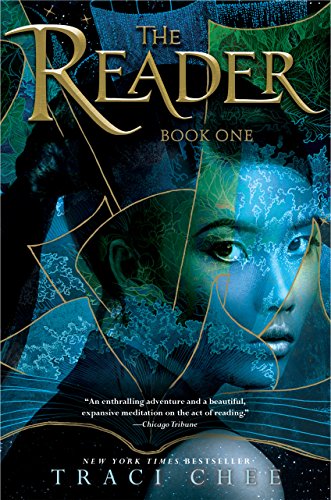By Samantha Pak
Northwest Asian Weekly

The Reader
By Traci Chee
G.P. Putnam’s Sons Books for Young Readers, 2016
Sefia’s childhood was not like most. Growing up, she and her parents stayed under the radar and they taught her what to do in case anything ever happened to them. And when something does happen — a few years after her mother died from illness, her father is brutally murdered — she flees to the wilderness with her aunt Nin.
Then Nin is kidnapped and the only way to find out who is behind this, as well as her father’s murderer, is to figure out the odd rectangular object he left behind. After some time, she figures out it’s a book, possibly the only one in an almost completely illiterate society.
“Reader” contains many staples of the hero story: orphaned protagonist, at least one parent’s death that has more to it than it appears, and a quest to figure out the truth and make the world a better place. But while this has been done many times, Chee’s take on the fantasy adventure story is unique and will really make the reader think about the written word and the art of reading.
Sefia is a strong character who is resourceful and quick thinking. She has to be to survive the journey she embarks on, which is filled with pirates, assassins, kidnappers, and more. Chee also does a great job in developing the secondary characters — from Archer, the mute boy Sefia teams up with, to the many pirates aboard the ship they stowaway on — and readers really get to know them.
As the first book in a trilogy, there is also quite a bit of world building throughout “Reader.” It’s a fictional universe filled with a cast of diverse characters. And Chee balances exposition with plot and character development very well, which is not an easy task. The payoff at the end is especially rewarding as readers begin to understand more about what happened to Sefia’s parents and what she is now up against.

Aru Shah and the End of Time
By Roshani Chokshi
Disney Hyperion, 2018
At age 12, Aru Shah has become a pro at stretching the truth in order to fit in at school. But then a few of her classmates catch her in a lie. They find her at home in the Museum of Ancient Indian Art and Culture, where her mother works as a curator, instead of in Paris, like she told them. To prove that she’s not a complete liar, they dare Aru to light the supposedly cursed Lamp of Bharata.
But it turns out it actually is cursed and Aru has freed the Sleeper, a demon who is tasked with awakening the God of Destruction. Now, with her classmates and mother frozen in time, it’s up to Aru to save them and the rest of the world. It turns out Aru is the reincarnation of one of the five Pandava brothers, demigods from the Hindu epic poem, the Mahabharata. Fortunately, she won’t be alone. She has the guidance of a curmudgeonly pigeon named Boo and Mini, who is the reincarnation of another Pandava brother. Together, they face demons, meet the four seasons in person, and visit the Otherworld Night Bazaar (which resembles an oversized Costco).
While “End of Time” is an epic adventure, it’s also the story about a girl who learns about true friendship and what it means to be truly accepted for who you are. Neither Aru nor Mini really fit in at school or have friends, but they find true sisterhood with each other. With girls and women often being pitted against each other, it was refreshing to see a strong female relationship portrayed.
While saving the world is serious business, Chokshi injects humor throughout the story (I particularly enjoyed Mini constantly correcting people that they are heroines, not heroes). Because we all need a little levity in our lives.

Momotaro: Xander and the Dream Thief
By Margaret Dilloway
Disney Hyperion, 2017
Xander Miyamoto has just learned that the Japanese folktale hero Momotaro is real and that he is actually a descendant. He’s also just finished saving the world, it’s summer vacation, and his mom has returned from a long absence.
But instead of being happy, Xander isn’t sure he’s up for being Momotaro.
He’s spending his break studying and training with his dad. It’s just a matter of time before the oni — demons behind many of the bad things in the world — come after him. And instead of being happy about his mother’s return, Xander is resentful. On top of that, the 12-year-old has been plagued with nightmares every night. To help with the nightmares, Xander’s grandmother gives him a special baku charm. But he ends up using too much of it and it takes away not only his dreams but those of everyone in the house.
So Xander embarks on another quest, this time to find the baku and bring back everyone’s dreams — along with their hope, motivation, and imagination.
Once again joined by his best friend Peyton and new friend Jinx, Xander learns that there are different ways to be a hero. Despite having saved the world once, Xander is still a young boy with self confidence issues that come with that age. In addition, the mixed feelings he has following his mother’s return are realistic. And even after he learns why she left, it takes time for him to come to terms with things — especially as it has to do with her Irish heritage and what sets him apart from the Momotaro of the past.
Not only is Xander a multi-faceted character — a young, impulsive, and occasionally self-centered young boy — Dilloway has also developed the secondary characters, as we see them go through their own struggles as they work together with Xander to once again save the world.
Samantha can be reached at info@nwasianweekly.com.
